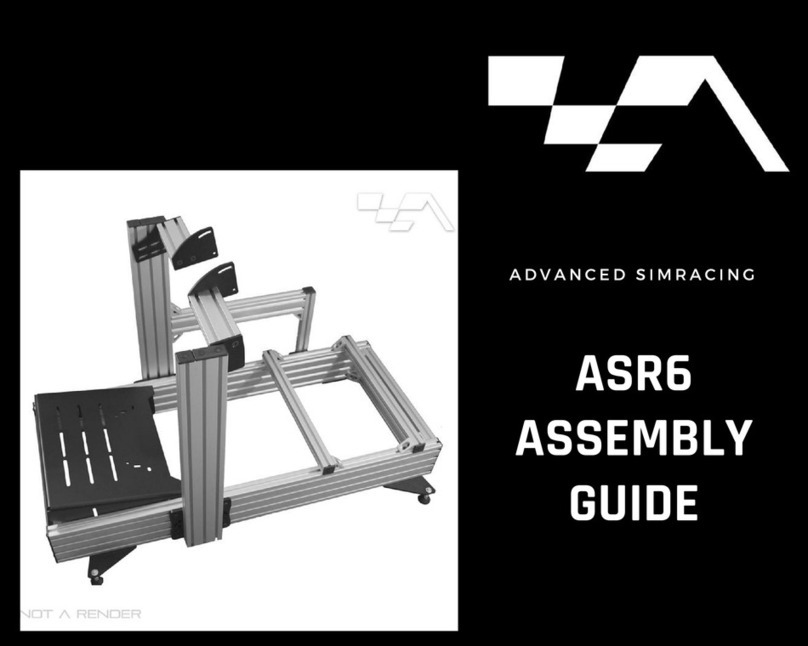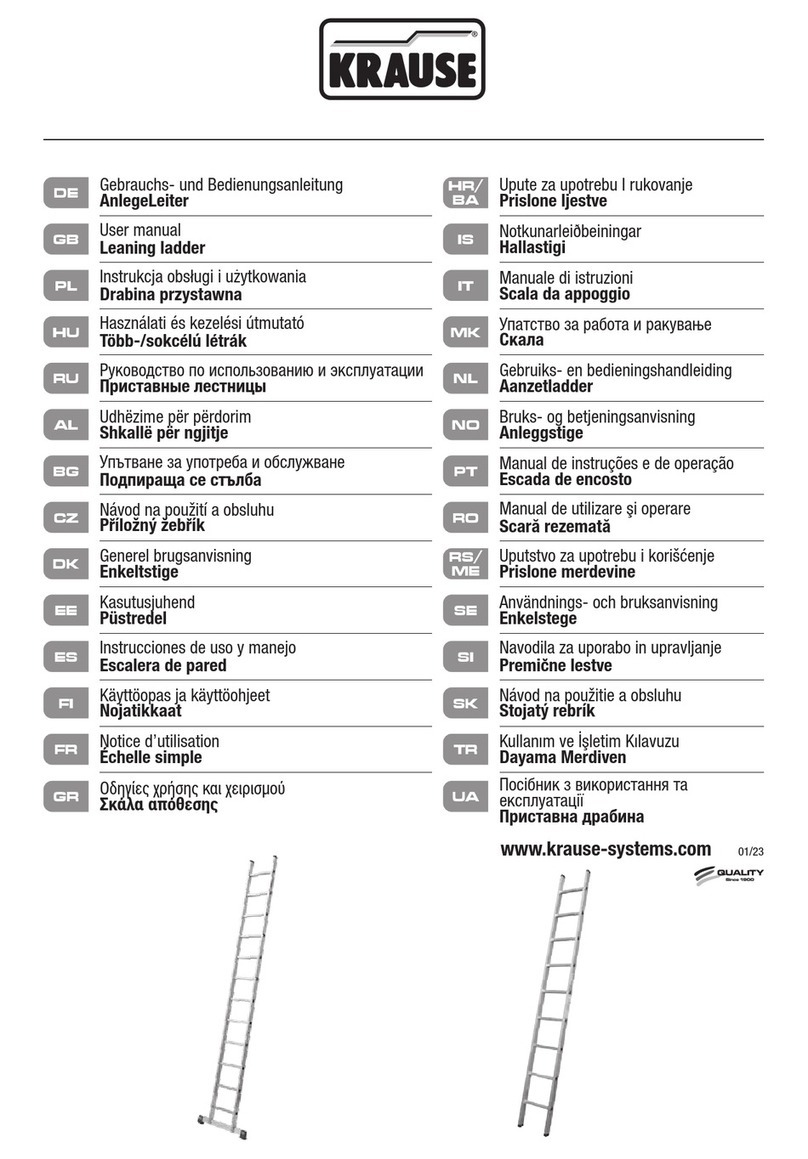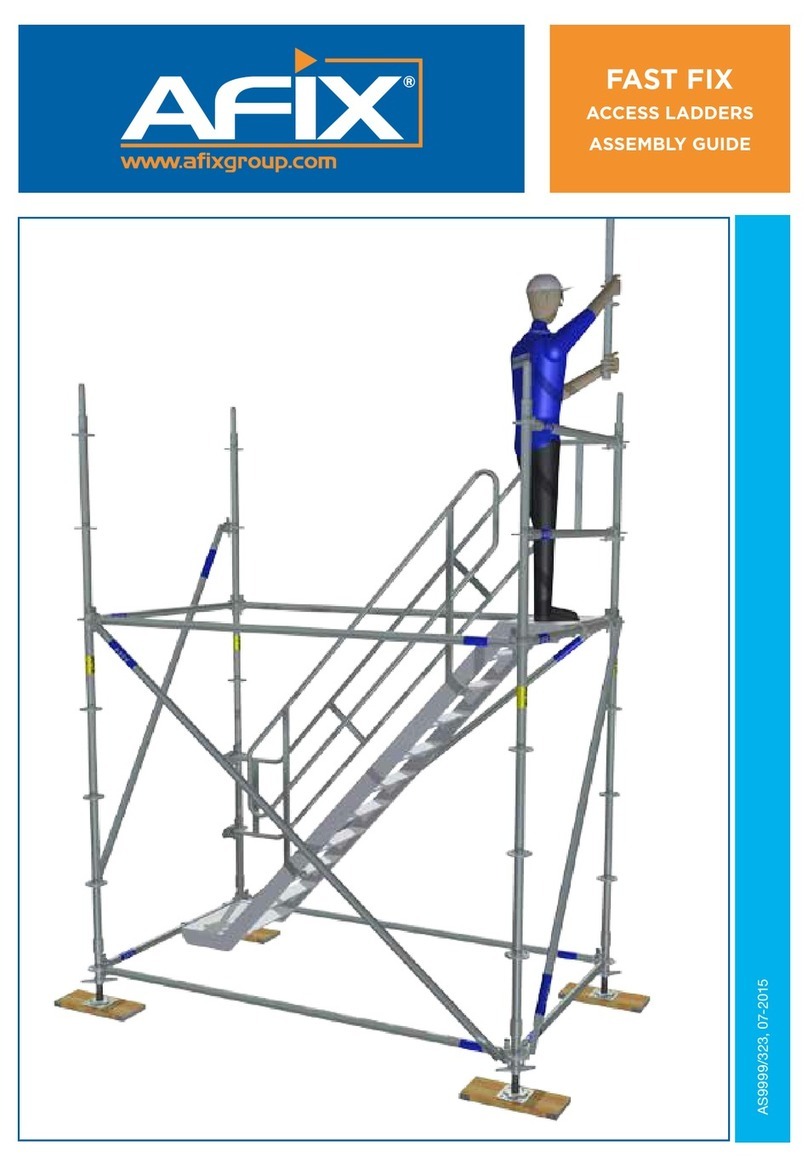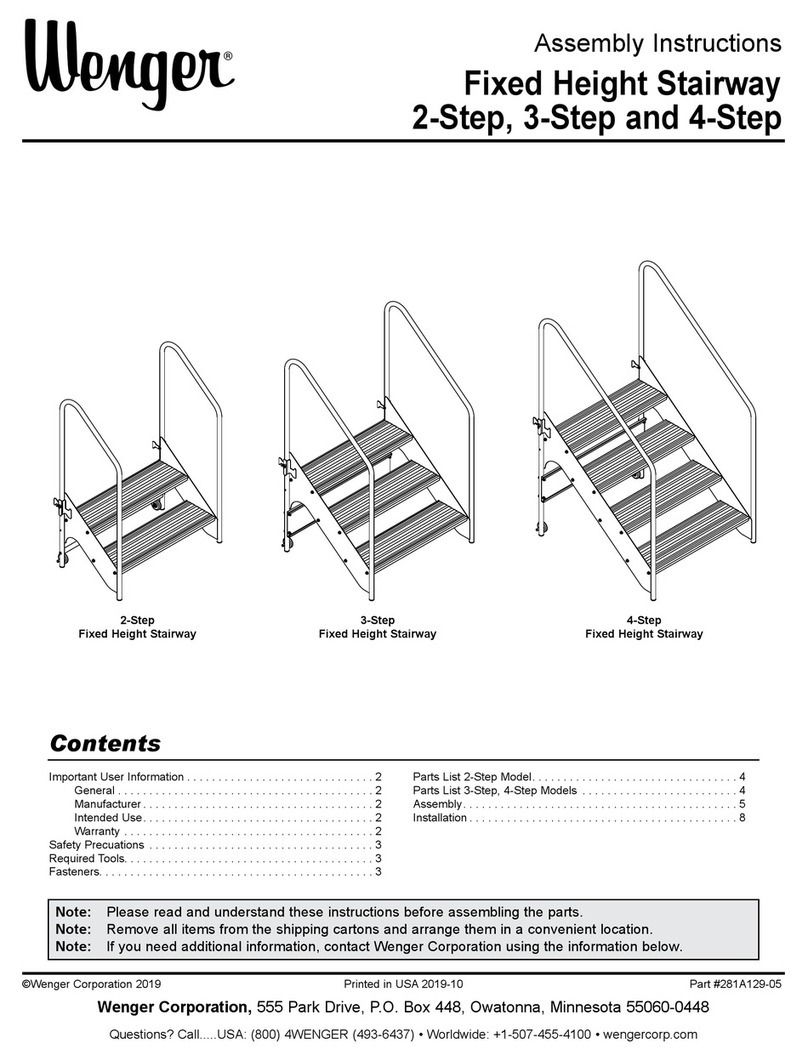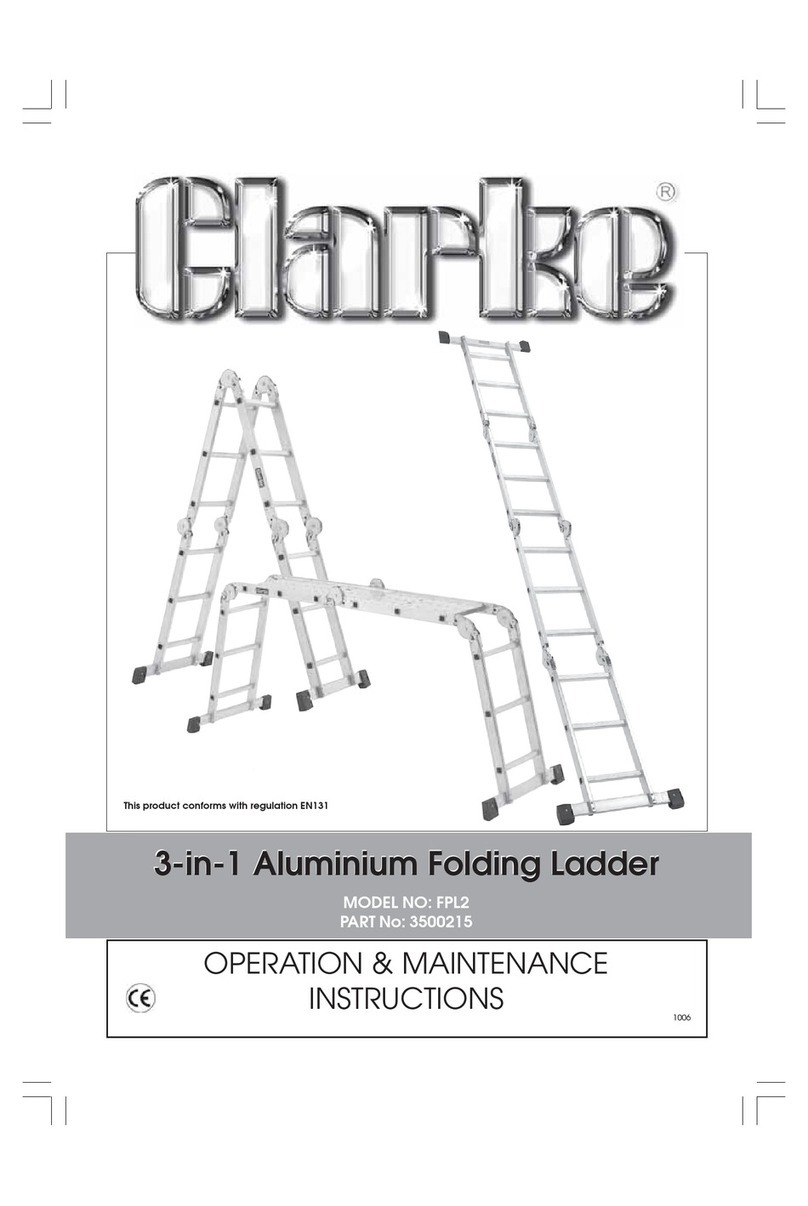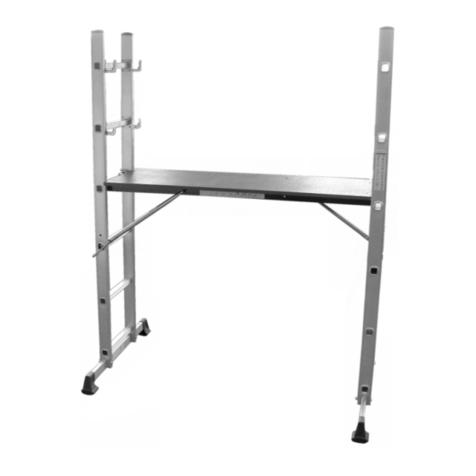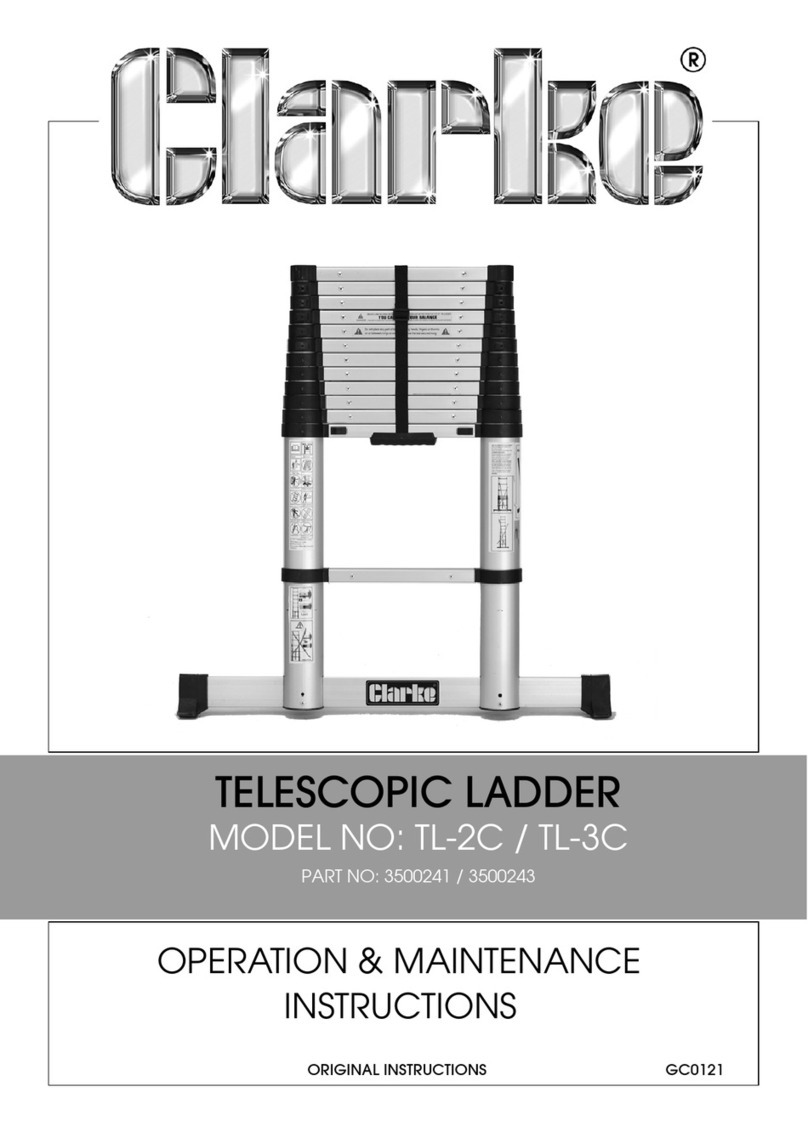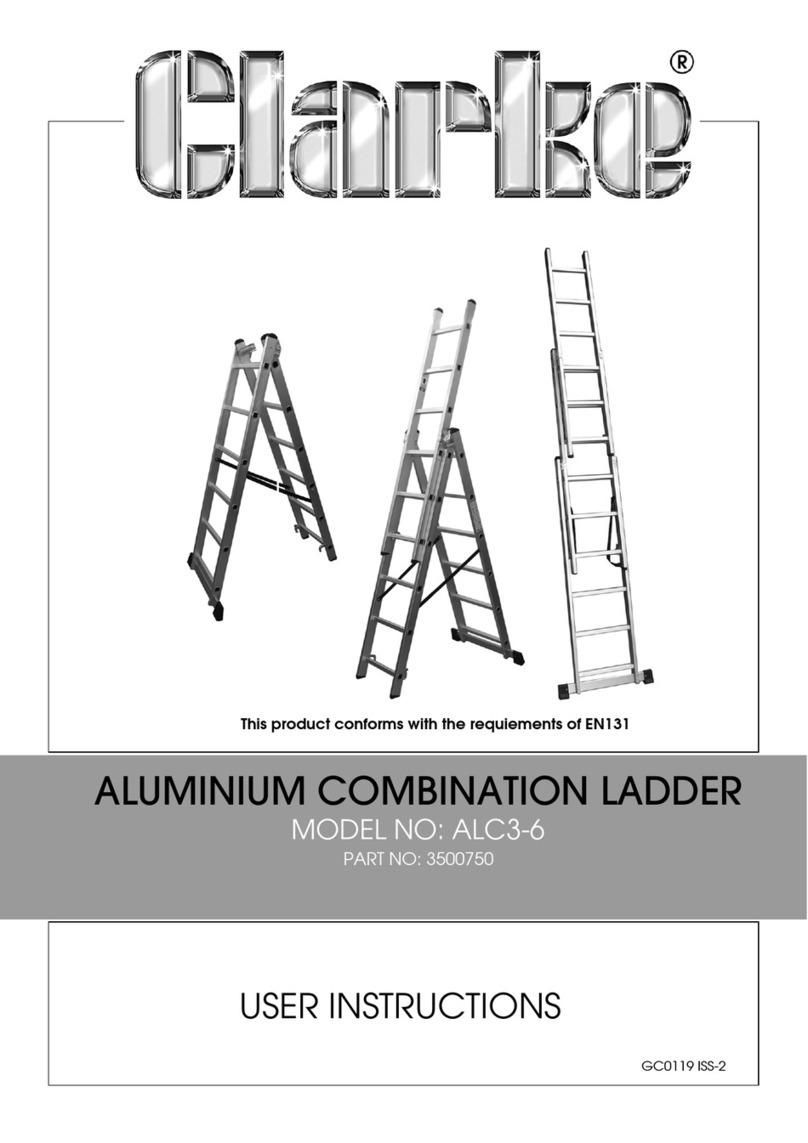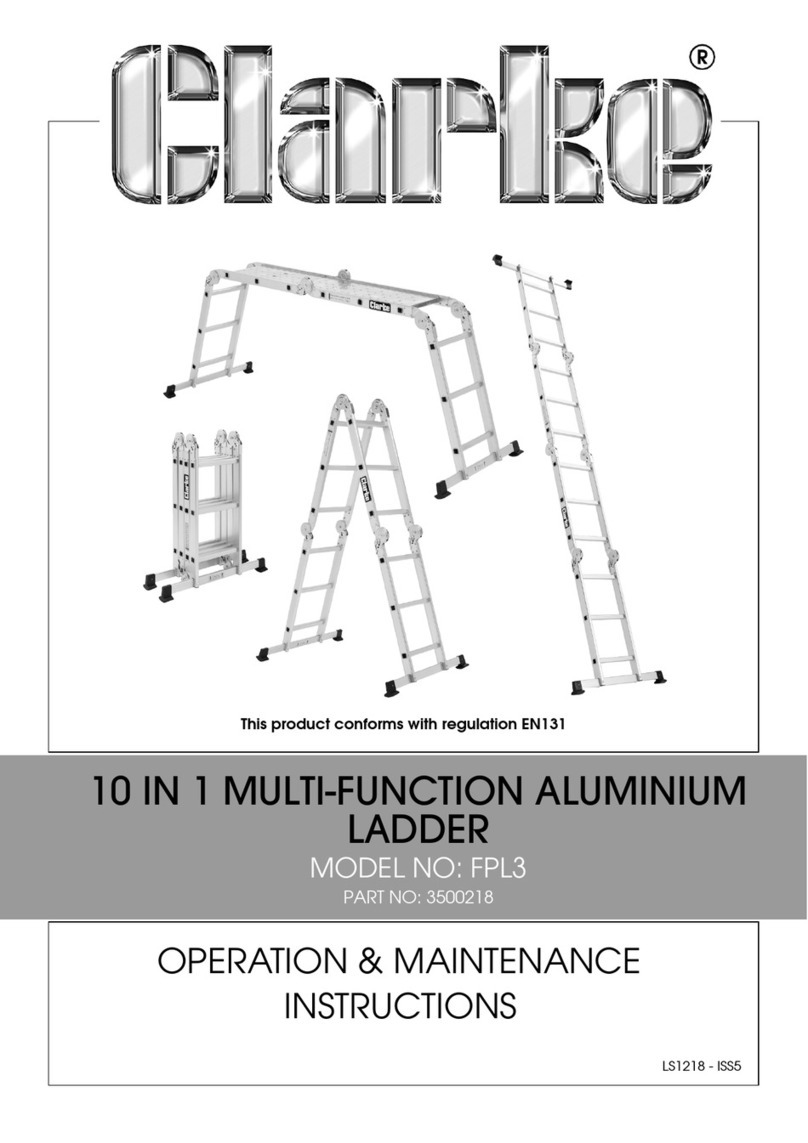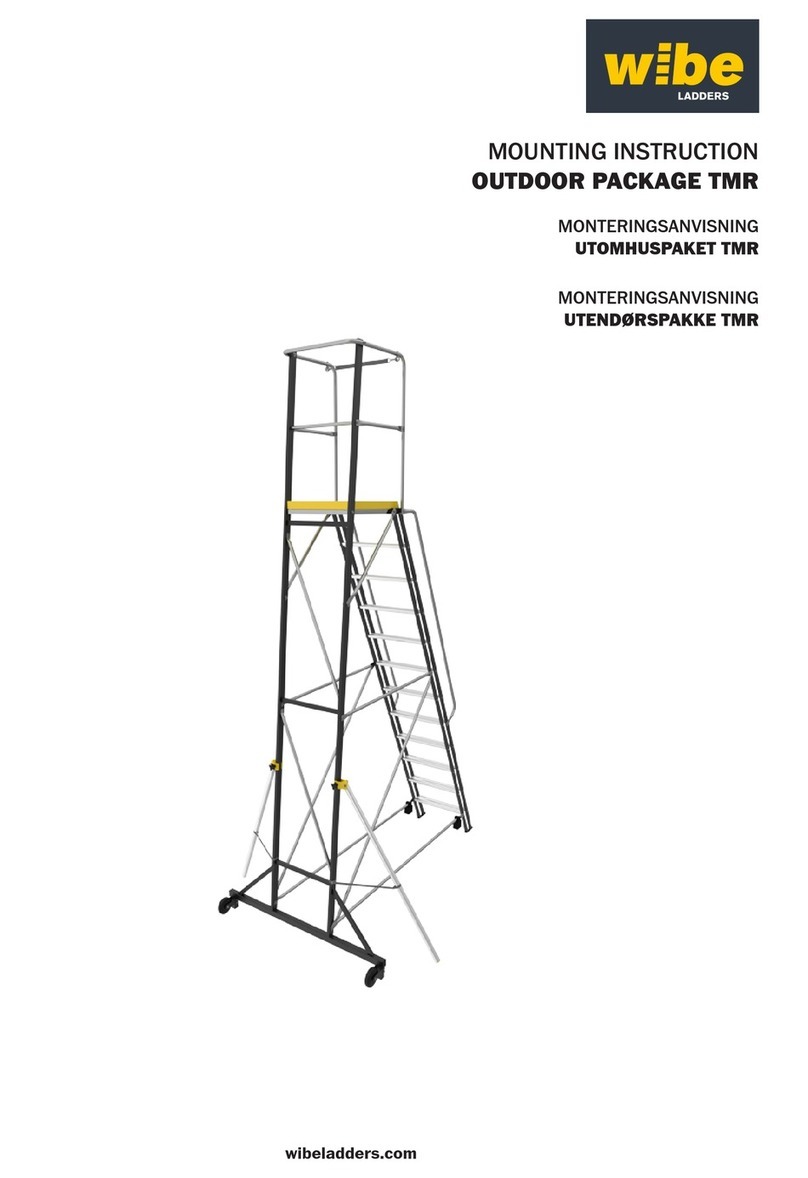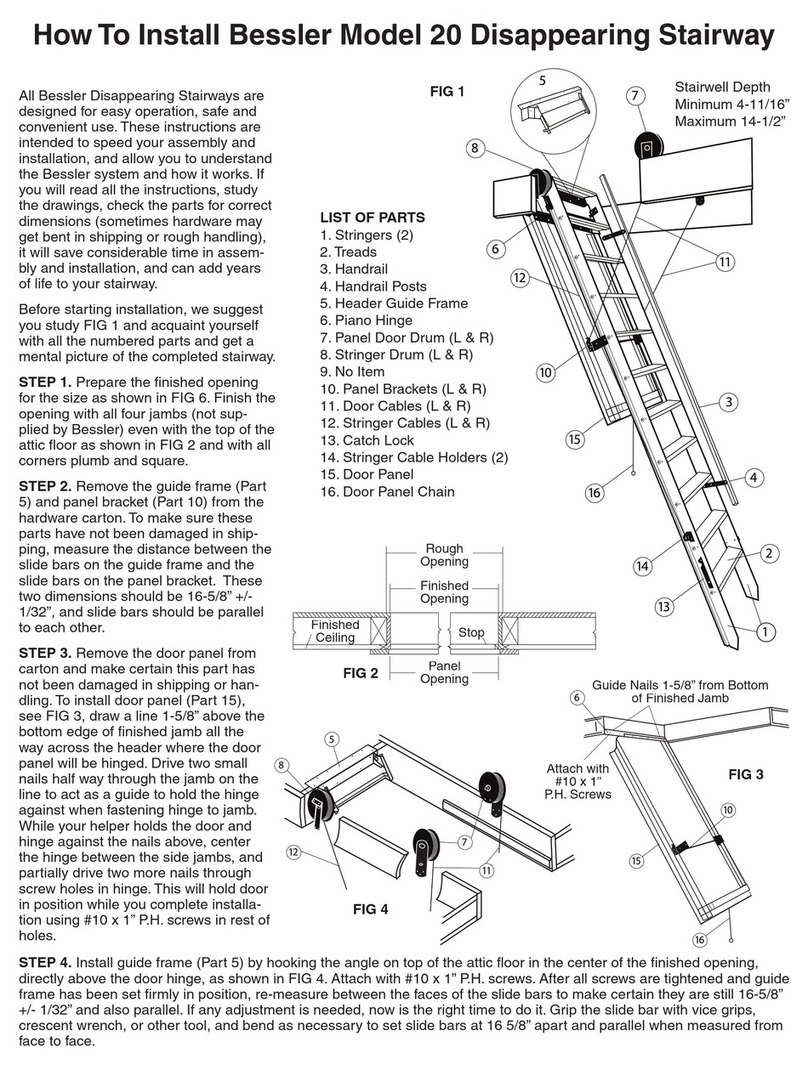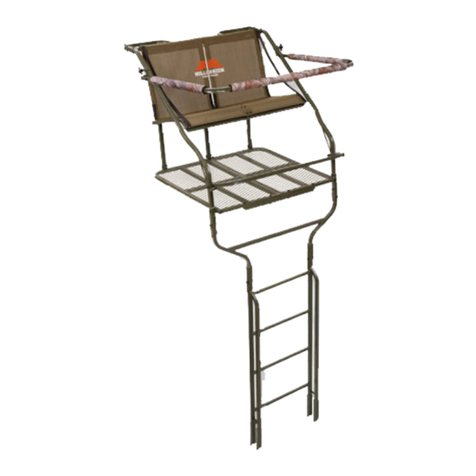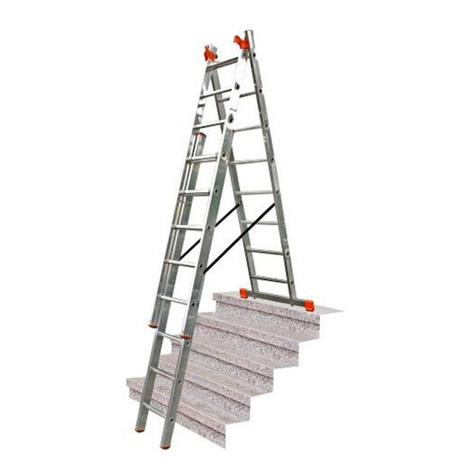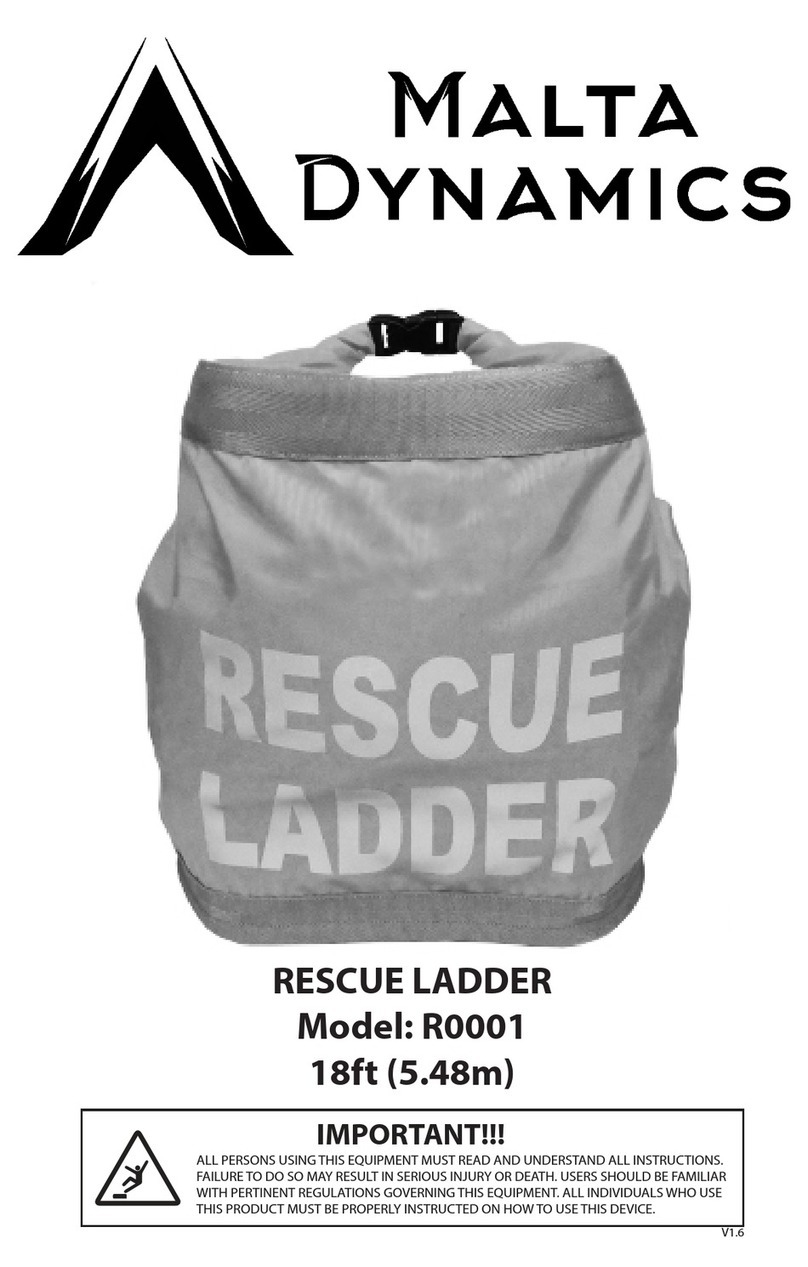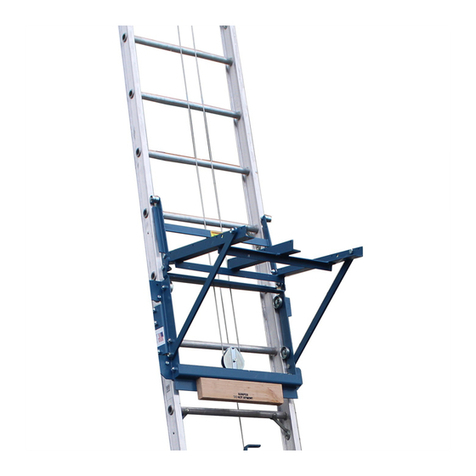
4
LADDER SAFETY
DON’T exceed the maximum load, this ladder is built for maximum load of 150 kg.
DON’T Be tempted to use a ladder if you are not fit enough, or suffer from
giddiness or aren’t confident with heights.
DON’T stand on the top three rungs.
DON’T overreach; user should keep their belt buckle (navel) inside the stiles and
both feet on the same step/rung throughout the task. Move the ladder and re-
secure it whenever necessary.
DON’T Use the ladder if the rubber feet/plastic end caps are missing.
DON’T Carry heavy items or long lengths of material up a ladder.
DON’T Use a ladder in a strong wind or near any power lines.
DON’T Allow any child under 16 to use a ladder.
DON’T step off a ladder at a high level.
DON’T use the ladder outside in adverse weather conditions, such as strong wind.
DON’T spend long periods on a ladder without regular breaks (tiredness is a risk).
DO extended the ladder at least 1 m above the landing point;
DO remember that their safest angle of use comes when every 1 measure out
from the wall is matched by 4 measures up it. Remember the rule: ‘ONE OUT FOR
FOUR UP’.
DO try to keep both hands free to hold the ladder as much as possible while you
are climbing or descending - if you need to carry any tools, use a shoulder bag,
belt holster or belt hooks.
DO hold onto the ladder with one hand while you work. You can get special trays
which fit between the stiles to take paint pots, tools etc.
DO make sure a door is locked, blocked or guarded by someone if you are up a
ladder in front of it.
DO familiarise yourself with the operation of the locks.
DO keep a secure grip on the ladder when ascending and descending.
DO wear suitable footwear when climbing a ladder.
DO avoid work that imposes a sideways loading, such as side-on drilling through
solid materials (e.g. brick or concrete).
SAFETY WARNINGS (SPECIFIC TO TELESCOPIC LADDERS)
DON’T use the ladder in locations such as water-filled wells, as this may result in a
malfunction due to dirt and water getting into the tubes.
DO Always transport the telescopic ladder in the closed position, so that the
telescopic tubes are protected from damage inside each other.
DO not open, close or use the ladder upside down.

